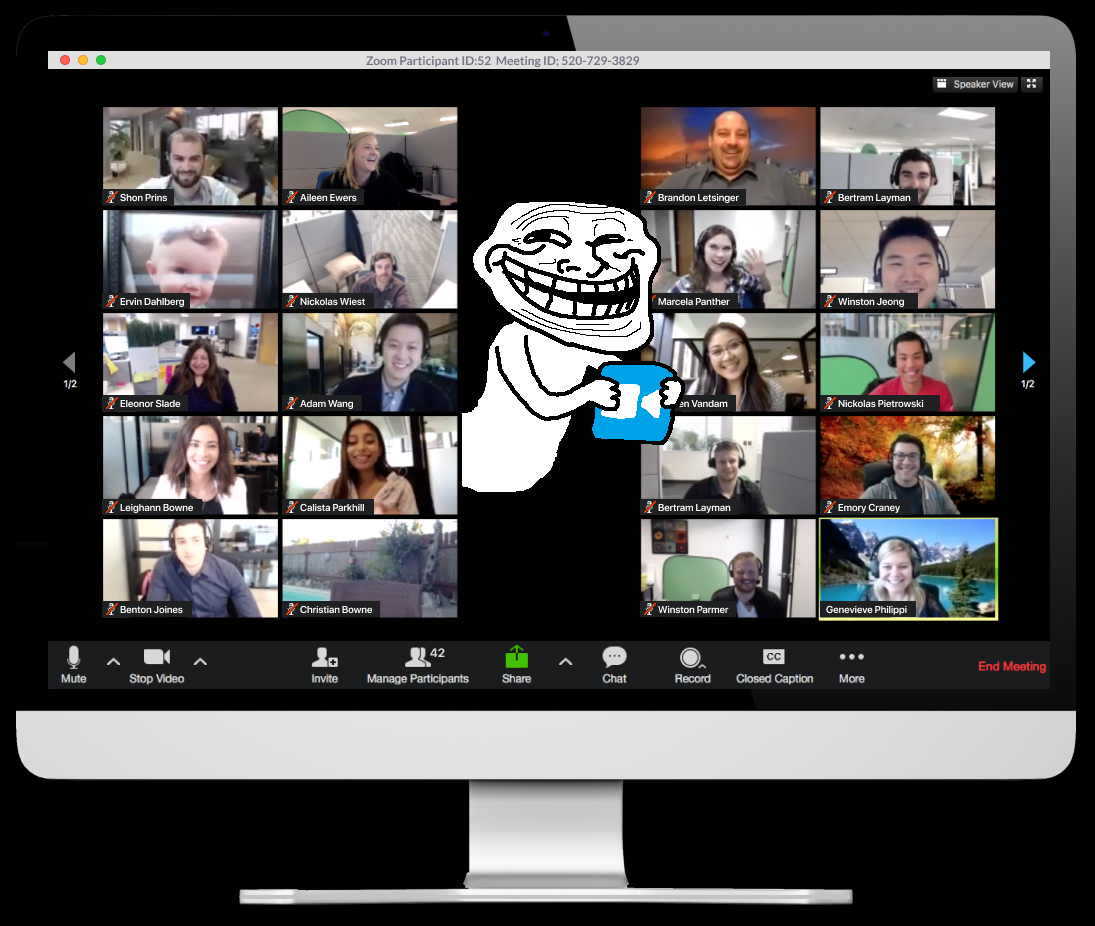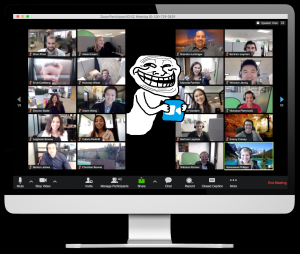
Written By: Matt Hirsch

When the pandemic hit, Zoom became the medium for students to continue their studies and for professionals to meet with their coworkers. Though the shift to an online platform gave rise to Zoom bombing; when an unexpected intruder invades a Zoom call with the intention of disrupting it.
In July of 2020, the Brooklyn College Anti-Racist Coalition had their own run-in with a Zoom bomber as they held a meeting to help spread awareness about combating systemic racism.
“At first I was unaware of what was happening. I thought it was background noise from one of the participants,” said Irva Adams, a BC staff member who spoke at the event. “As the person continued with strong obscene language, I knew that this was intentional. Thankfully, the disruption was brief and we were able to continue without any other occurrences.” Also BC, the Women of Color group had an event terrorized with racist imagery and slurs.
Luckily, the situation was handled quickly and without much trouble, though that’s not always the case. In September of last year an elementary school in Leander, Texas reported a Zoom bomber that showed “inappropriate sexual content” to a classroom of fourth-graders. Depending on the context, a Zoom bombing can seriously affect a student’s ability to learn and focus, or even be a traumatic experience.
“In our situation, we were able to move on in a productive way. But, this can definitely have an effect on one’s ability to function, especially if it’s racially charged,” said Adams.
Before the pandemic began, Zoom hosted 10 million daily meeting participants. In April of 2020 that number grew to 300 million. The surge of users meant more targets for Zoom bombers. As such, last April, the U.S. The Attorney’s Office for the Eastern District of Michigan released a statement warning Zoom bombers could be charged with state and federal crimes. In March of last year, the FBI also published a press release warning about Zoom bombings, and how to prevent them.
Now Zoom is just another part of our daily lives, and Zoom bombing is an unfortunate reality of this new world we live in. People have gotten used to the fact that occasionally meetings can be invaded by an angry person spewing hate speech. In the case of Adams, some of her colleagues realized what was going on faster because they’d seen it happen before.
“It was alarming, but for some in the room, they immediately knew what was happening,” said Adams. “As this was my first experience, I was unaware of what was actually happening until one of the participants called it out.”
Though Zoom bombings are normally nothing more than an inconvenience, it can become a traumatic event, like in the case of the fourth-grade class in Texas. However, there are easy steps to help prevent them from happening. Setting a password for the meeting, creating a waiting room, and setting screen-sharing to “host only” are among a few solutions. If a Zoom bombing does occur, don’t interact with the bomber and wait for the host to remove them.
After spending an entire year of using Zoom to interact with colleagues and classmates, there are some proven advantages. Accessibility to the classroom and office is at an all-time high without a commute. People with mobility problems or other disabilities don’t have to find a way to physically get themselves to class. Zoom, (and other video teleconferencing platforms,) have innovated the ability to work, or learn, from home.
As with any innovation though, there will always be unforeseen issues. Zoom bombing was an unexpected consequence of moving to an online learning environment. If things go CUNY’s way, the option to return to the classroom could become reality again in the fall semester of 2021, leaving Zoom bombings in the past.
